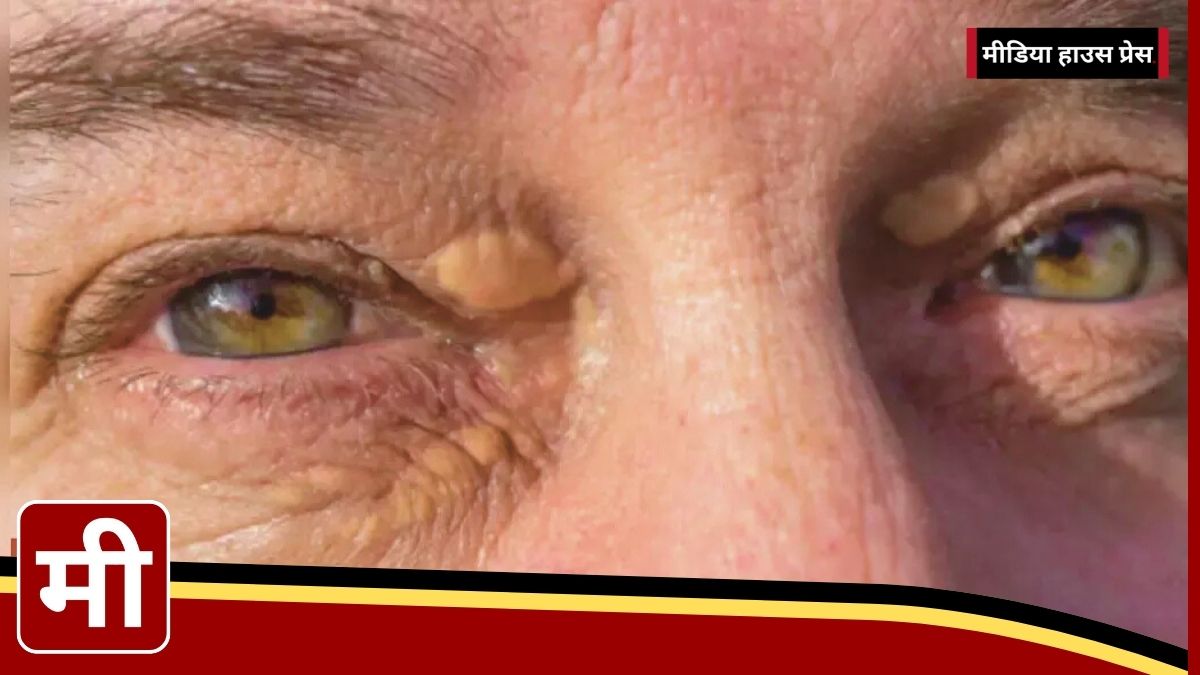What Is Xanthelasma?
Xanthelasma is a soft, yellowish plaque that appears on or around the eyelids. It’s most commonly found in middle-aged and older adults and is more likely in individuals with elevated low-density lipoprotein (LDL) cholesterol, commonly known as “bad” cholesterol. When these deposits form, it indicates an underlying accumulation of lipids or fats in the body, sometimes suggesting similar deposits in blood vessels and arteries. This lipid buildup can restrict arteries, leading to conditions like atherosclerosis, a significant risk factor for heart disease.
Beyond Aesthetics: Xanthelasma as a Heart Disease Marker
While painless and harmless in isolation, studies suggest xanthelasma may indicate a heightened cardiovascular risk. Patients who develop these deposits often have increased cholesterol levels, signaling potential lipid imbalance. Over time, high cholesterol can impact blood vessels, creating plaque buildup that can constrict arteries and limit blood flow to the heart. This limitation can lead to coronary artery disease, heart attacks, or even strokes if unmanaged.
In fact, approximately 50% of individuals with xanthelasma have abnormal lipid levels—either high LDL cholesterol, low HDL cholesterol, or elevated triglyceride levels. It’s also more prevalent among those with uncontrolled diabetes or poorly managed hypothyroidism, both of which can influence cholesterol levels.
Who’s at Higher Risk?
Conditions like hypercholesterolemia (high cholesterol) and hyperlipidemia (elevated fats in the bloodstream) are directly linked with xanthelasma. Those with a family history of xanthelasma or heart disease may want to consider it a “red flag” for cardiovascular health.
Yellowish eye patches warrant a health check with a professional to assess cholesterol levels and heart health. Beyond cholesterol tests, monitoring blood pressure and blood glucose can help determine the current state of one’s cardiovascular health.
How to Manage Xanthelasma and Cardiovascular Risk
Managing heart health and xanthelasma requires a proactive approach. Here’s a breakdown of the best practices for maintaining balanced cholesterol levels and overall cardiovascular well-being:
- Regular Health Screenings
Routine cholesterol tests and assessments of heart rhythm abnormalities can detect potential risks early. Blood pressure and glucose tests also play a crucial role in managing heart health. - Balanced Diet
Emphasize fruits, vegetables, whole grains, and lean proteins. Reducing saturated and trans fats can significantly improve cholesterol levels. Foods rich in fiber, like oats and barley, can help reduce LDL cholesterol naturally. - Consistent Exercise
Physical activity supports heart health by boosting HDL (good) cholesterol and improving blood circulation, which helps prevent artery blockage. - Stress Management
Techniques such as mindfulness meditation, deep breathing exercises, and yoga can reduce stress levels, indirectly supporting heart health by preventing blood pressure spikes. - Quit Smoking
Smoking impacts blood vessels, increasing the risk of atherosclerosis. Quitting smoking can drastically reduce cardiovascular risks and improve overall health. - Medical Interventions
In some cases, cholesterol-lowering medications like statins may be prescribed. For those looking to address xanthelasma cosmetically, procedures like laser treatment, cryotherapy, or surgery can remove these deposits. However, recurrence is possible unless cholesterol levels are effectively managed.
While xanthelasma is benign and painless, it’s essential to recognize it as a potential cardiovascular risk indicator. By addressing high cholesterol levels and monitoring heart health, individuals can reduce the likelihood of severe outcomes like heart attacks or strokes. Prioritizing heart health through lifestyle changes and regular health screenings helps prevent these risks while promoting overall wellness.

